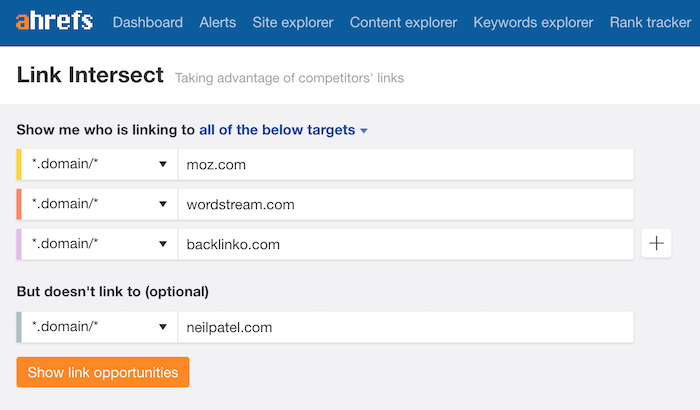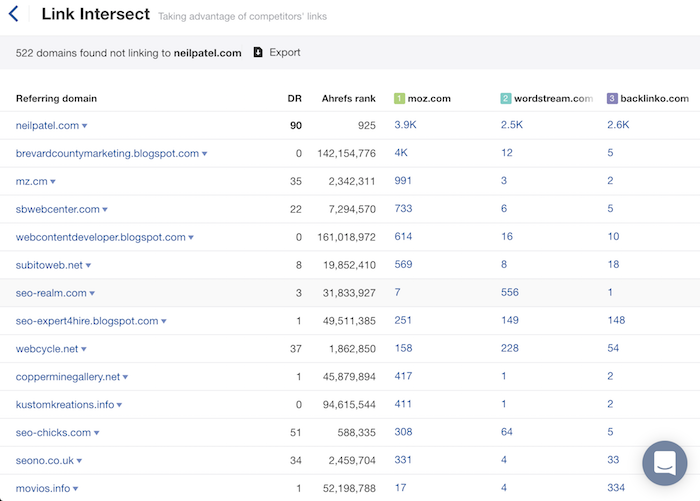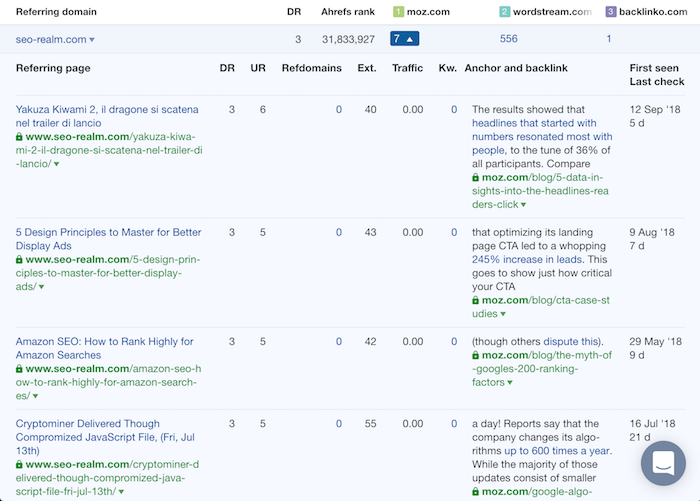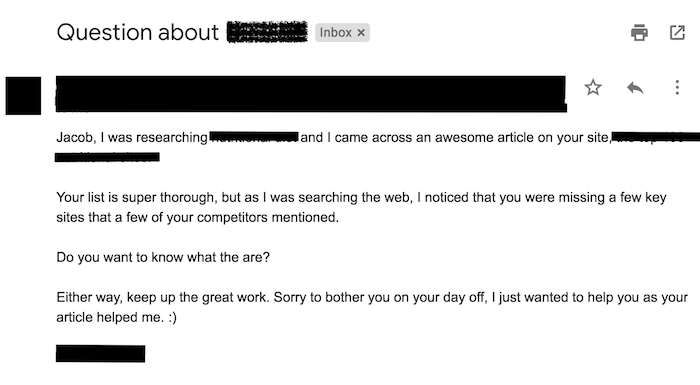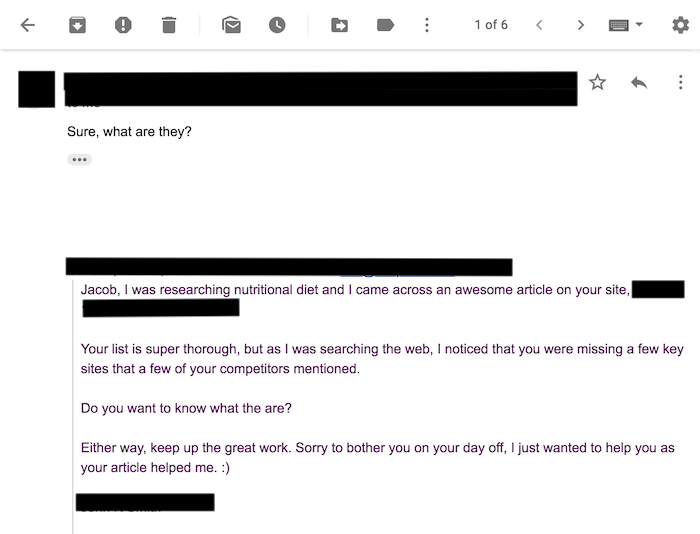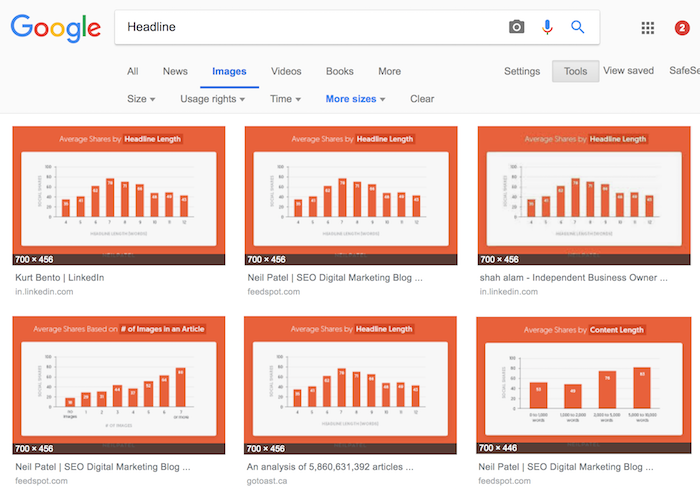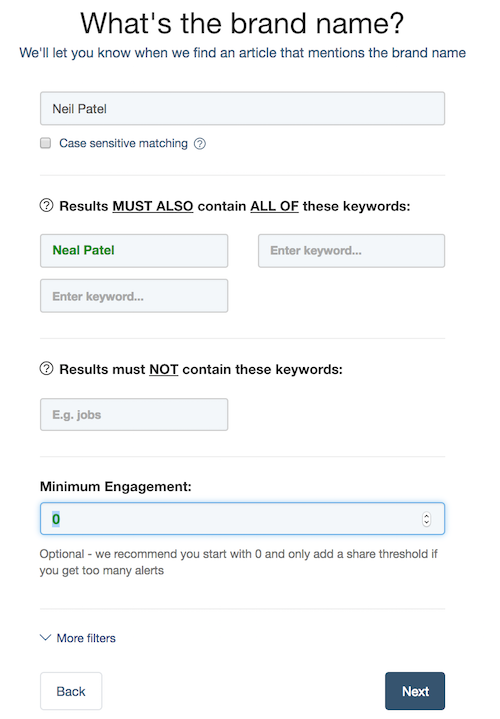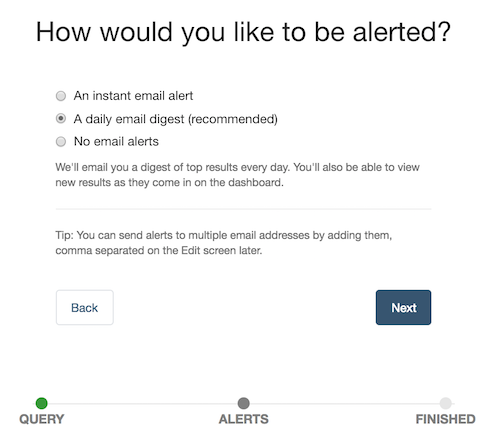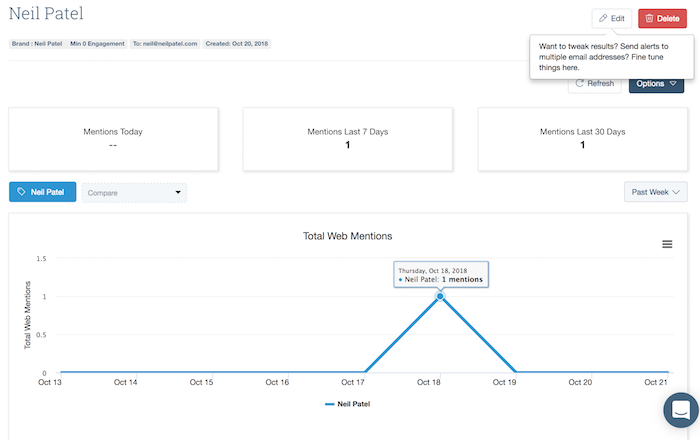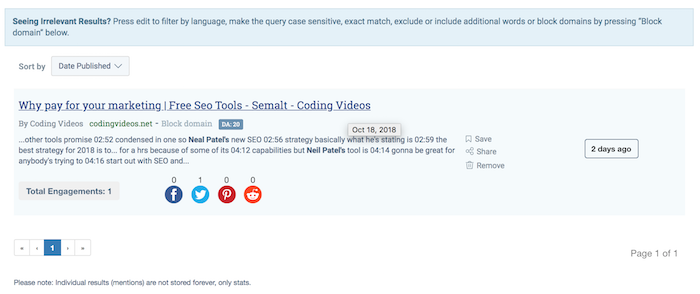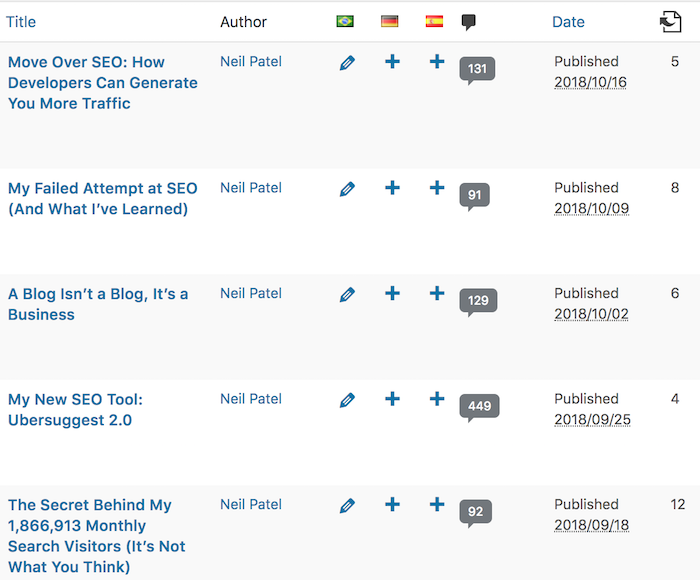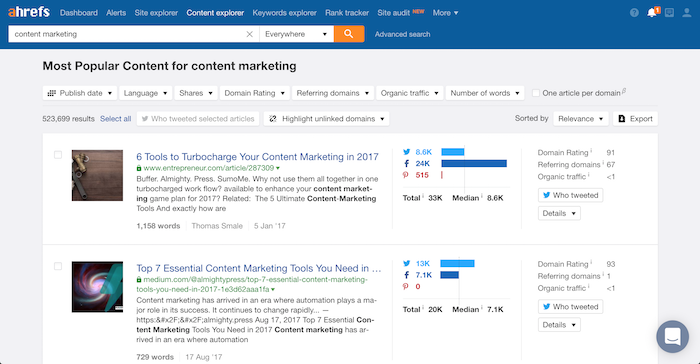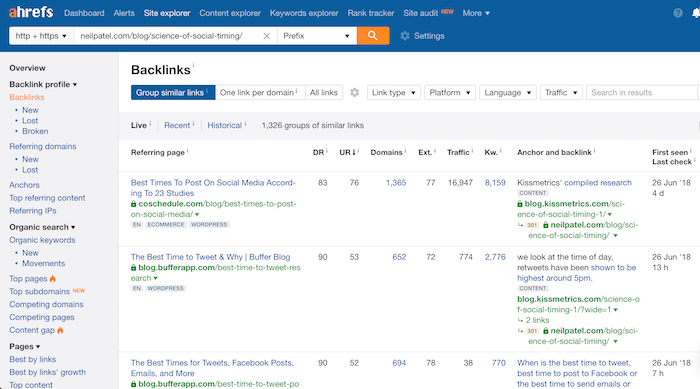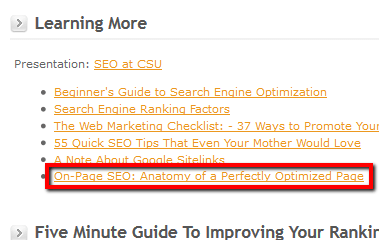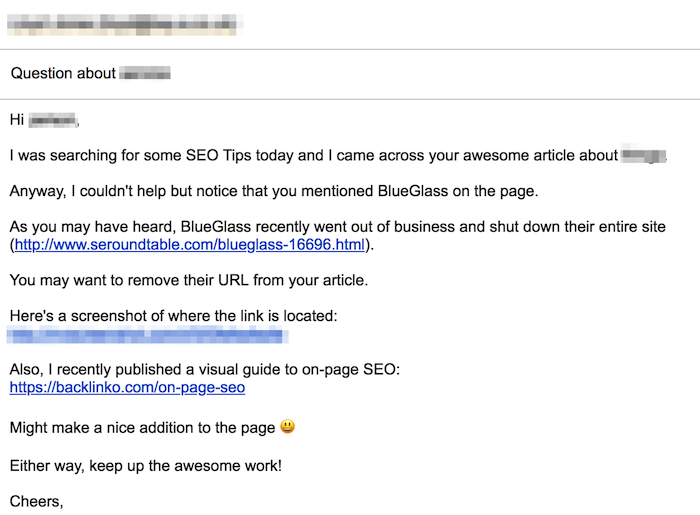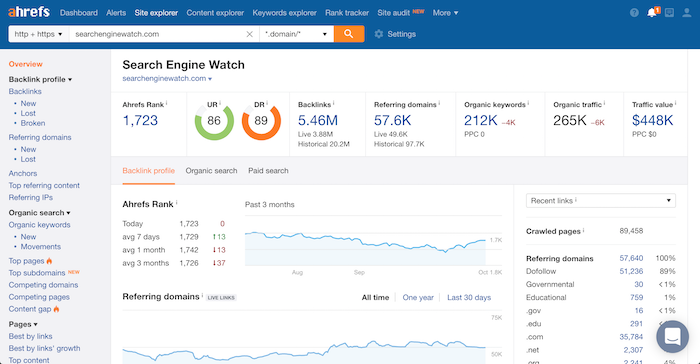may Google puke with FCS networker
-
- Shopify
Quicksprout pick: Easiest All-in-One
14-day free trial - BigCommerce
Quicksprout pick: Impressive Features
Free - Wix
Best Pre-Made Shops
14-day free trial - Squarespace
Best Free Templates
14-day free trial (with one-week extension if requested) - Magento
Best for Scaling
Unlimited free trial - WooCommerce
Best for Customization
30-day free trial
- Shopify
What’s the Right E-Commerce Software for You?
There are two worlds in e-commerce software: hosted and self-hosted. With hosted platforms, like Shopify and BigCommerce, you’ll get ready-to-go drag-and-drop templates, but you’ll give up some customization ability and pay a subscription fee. For most merchants, Shopify and BigCommerce are going to be in a dead heat. Both companies offer products that provide the same thing: an all-in-one hosted e-commerce solution for online businesses. They both do it well and they both start with similar price points.
If you’re trying to decide between Shopify and BigCommerce, we recommend comparing both during their free trial periods and see which one is a better fit for your business. Both offer a couple of weeks to set up and explore your store, no credit card required.
It’s also possible to build a store with Squarespace or Wix site, monetize your existing site, or even build a non-store site and then convert it to a credit-card accepting store later on. This is a good option if you’re already using Squarespace or Wix, if not sure how much of your sales you’ll run through your site, or are just in the ideation phase. Wix will let you build you’re whole site for free; you’ll only need an e-commerce subscription when you’re ready to take that first credit card transaction. You can get up to 21 days free with Squarespace if you ask to extend the two-week free trial an extra week.
Want more customization power, or not ready to pony up a monthly fee? You want self-hosted software like Magento or WooCommerce — you’ll be nearly limitless in what you can do, and there are plenty of pre-made plugins you can pay for and install to avoid coding every little thing (think abandoned cart e-mails or related products carousels). If you go this route, we recommend brushing up on the best practices for running a successful e-commerce site, making a list of all the features you want and tallying up the add-on fees you’ll be paying before you commit to building your store.
The Top 6 E-Commerce Platforms
Shopify
- Quicksprout pick: Easiest all-in-one
- All-in-one hosted e-commerce platform
- Free 256-bit SSL certificate
- Unlimited products and bandwidth
- Offers Shopify Payments, its own payment processor, as well as integrations with over 100+ other payment gateways
- Integrates with Instagram, Facebook, MailChimp, Google Analytics
- Shipping discounts with USPS, UPS, and DHL Express
- Clients: Leesa, LeSportsac, Nestle, Zendesk, MVMT
- Sign up
Shopify is one of the most recognizable out-of-the-box solutions for small business owners — by some measures, it’s the second most popular e-commerce platform in the world after WooCommerce, and continues to grow like crazy. We think it’s a good fit for e-commerce sites that don’t have a lot of in-house technical support and don’t crave a ton of complex customizations.
Shopify is a full-blown hosted e-commerce platform, which means that it takes care of everything you need to run an online business, from a website to website hosting to inventory management to accepting credit card information. It also offers point-of-sale hardware, and integrates into online marketplaces like Amazon and eBay.
Shopify’s core product comes in a few different plans for different prices, ranging from $29/month to $299/month. More robust functionality (and more perks, like better credit card rates, more user accounts, and advanced reporting) come with the higher price tag. If you already have a website and are interested in adding some shoppable products and a shopping cart, we recommend skipping down to where we discuss Shopify Lite. Full-blown Shopify is probably more than you need.
Shopify makes it pretty straightforward for a small business to get up and running — like a lot of hosted e-commerce platforms (including BigCommerce), you have a 14-day free trial where you can actually build your entire store and try out the features and functionality without ever entering a credit card number. Shopify is template-based, which means you choose the basic look and layout of your store from 10 free or 57 for-purchase themes, and customize from there. Shopify claims that its templates are fully customizable, and it does give its merchants full access to the HTML and CSS of their stores, but heads-up: Shopify uses a Liquid setup, which will have a little bit of a learning curve for those who are more used to PHP.
Because it’s such a force in the industry, Shopify integrates with pretty much every other app, SaaS, and technology out there, be it live order tracking, automated up-selling bots, or finding dropship products to sell. Shopify has its own app store a la Apple and Google with built-for-Shopify (and often built-by-Shopify) technology that you can plug and play to make your store do everything you want. This is a double-edged sword for some merchants, who find that Shopify relies so much on third-party integrations that some of its built-in technology is lacking. A good rule of thumb: Make a list of all the functionality you want for your site and see if you’re satisfied with what you get for free during your 14-day trial. If not, explore what add-ons and plugins are available (there are over 2,400 in the Shopify app store) and see how much they’ll add to your bottom line.
Speaking of bottom lines: You’re going to have to do a lot of math to see which payment gateway makes the most sense for your business no matter which e-commerce platform you choose. But one of Shopify’s biggest standouts is that it’s built its own payment gateway, Shopify Payments. While you still can integrate with over 100 others (in fact, you’ll have to if you have customers outside of the US, the UK, Australia, Canada, Hong Kong, Ireland, Japan, New Zealand, and Singapore), Shopify Payments potentially eliminates one more integration you’d have to do to get up and running. At 2.9% + $0.30, Shopify Payments’ rates are right in line with other leading payment gateways, including PayPal, stripe, and Authorize.net, but it does tack on an extra 2% transaction fee for any payment that isn’t processed through Shopify Payments. Check to make sure you qualify to sign up for Shopify Payments in its Terms of Service, then get out your calculators. Remember, accepting multiple payment options is one of the 11 best ways to boost online sales.
Outside of its core e-commerce hosting, Shopify offers a supercharged and highly customizable ShopifyPlus plan for high-volume merchants and enterprise businesses, and Shopify Lite, which is essentially just Shopify’s payment processing functionality. The Lite plan might be interesting to very small businesses just entering e-commerce. It acts a lot like PayPal: you can pop a Shopify Buy Button into your WordPress or Squarespace site, swipe credit cards with its app, and sell on Facebook and Facebook Messenger. Shopify Lite is $9/month.
Frontend features
- Discounts
- Gift cards
- Digital products
- Product reviews
- Free shipping
- Refunds
- Customer accounts
- Guest checkout
- Abandoned checkout recovery
- Automatic carrier shipping rates
- Automatic taxes
- Flexible shipping rates
Backend features
- Blogging platform
- Customer profiles and groups
- Order fulfillment
- Synced mobile app
- SEO optimization
- Product variations
- Inventory management
- Reporting
Customer support, training, and resources
- 24/7 support on phone, live chat, and email
- Help center
- Downloadable guides on e-commerce basics
- Free on-demand courses, live coaching calls, business templates and more through Shopify Academy
- Two podcasts: Shopify Masters and TGIM
- Free tools and free stock photography
- Shopify community forums
- Shopify Experts on shop setup, design, custom coding and more – for hire
- Shopify brick-and-mortar support and networking space in Los Angeles
BigCommerce
- Quicksprout pick: Impressive Features
- Unlimited products and bandwidth
- Free SSL certificate
- Integrates with over 60 payment gateways with no transaction fees
- Shipping discounts with USPS
- Integrates with social media, Google Shopping, PayPal One Touch, ShipperHQ
- Clients: Toyota, Ben & Jerry’s, Camelbak, Kodak, Paul Mitchell
- Sign up
Like Shopify, BigCommerce’s core product is available at a few different functionality tiers, ranging from $30/month to $250/month; also like Shopify, higher tiers are more robust, including features like abandoned cart saver, product filtering, and customer loyalty programs. Unlike Shopify, though, BigCommerce has a sales cap on each of its plans. If you’re bringing in more than $50k/year, for example, you’ll no longer qualify for the Standard plan, and be automatically upgraded to Plus ($80/month with a sales cap of $150k per year).
Once you’re inside the product, you’ll see both are built to act similarly. BigCommerce is also theme-based, with 7 free mobile-friendly templates (plus 119 for purchase) for you to install and customize, be it through a drag-and-drop site editor or from the ground-up using the theme’s framework. Shopify and BigCommerce are so comparable we recommend comparing both during their free trial periods and see which one is a better fit for your business. BigCommerce offers 15 days to set up and explore your store, no credit card required.
One difference you’ll definitely notice is how many native features BigCommerce has installed right out of the box. It offers an outstanding number of technical integrations and marketing features that Shopify might only be able to provide if you buy and install a plugin or extension (for example, single-page checkout). For some, BigCommerce’s roster of pre-installed features is going to be annoying — kind of like how annoying it was for people who didn’t like U2 having its most recent album auto-downloaded on their iPhones. BigCommerce customers might roll their eyes as they scroll by an option to add gift wrapping already built into their control panel. But those who aren’t overwhelmed by the options may find that they don’t need to pay extra for the functionality they do want. We recommend making a list of the features your business needs requires and testing if you like how they perform during your free trial, and check out what’s available in BigCommerce’s app store. That store isn’t as massive as Shopify’s (600+ add-ons and integrations compared to 2,500+) but there’s a lot to choose from. You also have access to BigCommerce’s flexible API if you need to make a custom integration
BigCommerce doesn’t have its own payment processing technology, which means you’ll have to integrate with a payment gateway before you start taking orders. It gives you over 60 to choose from, including all the big hitters: Authorize.net, PayPal, Stripe, Square, Skrill. Like Shopify, the higher tier your plan, the lower your rates. Unlike Shopify, BigCommerce doesn’t charge a transaction fee to work with these processors, so you’ll save a little there.
In addition to its core e-comm platforms, BigCommerce is also available at the enterprise level and with products tailored to B2B wholesalers. In summer 2018, BigCommerce also announced its new Commerce-as-a-Service solution, which is geared to service content-first small businesses who already have an established web presence — namely, a WordPress website. Through an integrated plugin, WordPress users (and businesses using other content management software) will be able to work in their CMS while “centrally managing catalog, customer and order data through BigCommerce.” Prior, customers would have to port their entire websites over and rebuild it on BigCommerce’s hosted platform, or opt for a self-hosted solution like WooCommerce or Magento. Commerce-as-a-Service is really new to BigCommerce — there’s no pricing and interested customers need to request a demo — but we’re excited to see where this technology goes. It could be an exciting bridge between the robust functionality of a hosted e-commerce platform and the hands-on DIY integrations of self-hosted solutions.
Frontend features
- Single-page checkout
- Coupons
- Discounts
- Gift cards
- Product ratings and reviews
- Real-time shipping quotes
- Abandoned cart saver
- Free shipping
- Faceted search
- Wish lists
Backend features
- Reporting
- Blogging platform
- Customer groups and segmentations
- SEO optimization
- Order fulfillment
Customer support, training, and resources
- Live chat, email, and 24/7 phone support
- Getting started how tos
- Downloadable guides
- Video tutorials
- BigCommerce community forums
- Designers, developers, and marketers for hire
- Blog
- Webinars
- Submit an idea
Wix
- Best Pre-Made Shops
- Free plan allows you to create your store
- Upgrade to accept payments
- Ready-made templates
- Drag-n-drop store builder
- Sign up
You might know Wix as a drag-and-drop website builder, but it’s also a drag-and-drop e-commerce shop builder, too. And the process is just as simple: create an account, choose your template (there are 60 e-commerce templates to choose from), load your inventory and product pages, set up payment information, and start selling. You can even get started picking your template, designing your store, and trying out the store manager where you’ll track orders, manage inventory, and send out customer newsletters with coupon codes or sales — all for free. Signing up is a simple a logging in with your Google or Facebook account.
It’s not until you want to accept payments that you’ll need to upgrade your account to a business / e-commerce account. Wix Business plans range from $20 to $35 per month — but they’re billed in full yearly subscriptions at the time of purchase, so really you’ll be laying out $240 to $420. You’ll get 14-days to test drive the plan.
All business plans allow you to accept online payments without paying commissions, and get unlimited bandwidth (so any number of customers can visit your store). The more expensive plans grant you more storage, up to 100,000 emails a month and higher-priority support response. You’ll also get 30G of Google Drive and email storage, so once you connect your domain you can use Gmail as your email at your unique address.
With a business plan, you can take credit cards, PayPal, offline payments, and don’t have to pay any commissions to Wix. Not all businesses are the same, so neither are the Wix templates. Any Wix template can run a store, if you add the “Wix Stores” app, or you can get a head-start with a pre-made stores template. To do that, you’ll first choose your business-type.
Run a bookings-based business? You’ll start with a Wix Bookings template. Your customers will get auto-email reminders about the event. Sell sessions individually or as part of a membership plan. If you accept offline payments, it’s as simple as checking the “mark as fully paid” box on the bookings dashboard. There’s even a bookings template for restaurants.
We like that it’s super fluid to make sales and note when you’re busy: simply block off time you’re not available in your Wix schedule on the mobile app; sync your Wix Bookings with you Google calendar automatically. Customers can also book directly from their mobile phones, too — by creating a club and inviting your customers to it, they can chat you, book a service, RSVP to an event, or start a discussion from the app.
We haven’t seen anything like the Wix Music page includes a customizable music player and a way to sell your music directly from your page, without paying any commissions. Your reporting will include most-played, most-shared, most-purchased, and most-downloaded songs.
There’s also a pre-made template for ticketed events businesses. You can set the ticket price, manage the RSVP list, invite and add guests, and edit details.
From there, it’s all the drag-and-drop joy Wix is known for. You’ll want to design a “storefront” or homepage, product pages for each of the items you sell with images and product information. Want the menu in a different place, in a different font, with other elements? Drag it, change it, save it. If you’ve ever felt templates to be limiting — I can change that but only in those 3 predetermined ways?! — then you’ll love the new Wix Code. It’s a hybrid platform, with all of the ease of a drag-and-drop and the control of your own customization and scripting with a built-in database, JavaScript backend and integrated development environment. Simply turn on the Wix Code editor and you’re in. (We should note: it’s in beta.)
We like the clean lines and look of the Wix templates, the drag-and-drop ease of it all, and the head start the pre-made stores give you. Unlike self-hosted e-commerce plans, which require upgrades to access features like coupon codes, everything’s included with a Wix e-commerce plan.
Frontend features
- Mobile optimized
- Product galleries with unlimited images
- Sale and featured product ribbons
- Secure shopping cart
- Confirmation emails
- Coupons
- Free shipping
- Tax and shipping calculations
Courses and training videos
Squarespace
- Best Free Templates
- Unlimited products and bandwidth
- Free SSL certificate
- Stripe payment gateway with no transaction fees
- Integrates with social media, ShipStation, PayPal, Apple Pay, MailChimp, Google Fonts & Typekit
- Coming soon! Squarespace-powered email marketing
- Clients: Taboocha, Rodarte, Halo Top, Baiser Beauty, Shhhowercap
- Sign up
Squarespace is best known as a website builder, but its e-commerce solution is one of the most popular in the world. In large part that’s because e-commerce functionality is built straight into nearly all of its plans: Even if you start with just a basic website, you can sell products. That grow-into-it flexibility makes it an interesting option for businesses who aren’t quite sure of their future plans. With a platform like Shopify, you’re e-commerce or nothing. A business without a thriving online store would be never choose Shopify.
But that makes choosing the right Squarespace plan a little bit more complicated. It splits up its products into Websites (with Personal and Business plans) and Online Stores (with Basic and Advanced plans). You can make transactions on both the Online Store plans, as well as the Business Website plan. A good rule of thumb: if you’re primarily selling product through your site, definitely opt for an Online Store plan. If you’re website is primarily content, and you happen to sell a few things, a Business Website plan might be plenty. All plans come with a 14-day free trial to test out the features and functionality, with the option to request an additional trial week if necessary.
The Business Website plan has pared-down functionality — the reporting isn’t as robust; there are no customer accounts; there are fewer inventory, order, and tax features — plus it tacks on a 3% transaction fee to all purchases. But it’s also only $18/month, which is one of the cheapest hosted options available.
Both of Squarespace’s Online Store plans comes with the full toolkit you’d expect from an e-commerce platform. Basic starts at $26/month, billed annually (or $30/month if you want to pay month-to-month), and Advanced ratchets up to $40/month billed annually (or $46/month-to-month). The Advanced plan gets you more — flexible discounts, gift cards, abandoned cart recover, access to the API.
If you do go with a Squarespace web store, it’s going to be beautiful. That’s not to say you can’t have a beautiful store with any other e-commerce platform, but with Squarespace, it’s basically a guarantee. They’re all built for mobile and aesthetically modern, albeit lots are heavy on imagery — you’re definitely going to want to have killer photography. It has over 20 template “families” to choose from (each family may have a few variations, but the same underlying structure), which can then be customized with Squarespace’s drag-and-drop editor or by tinkering with the HTML and CSS. You can choose any, but some are better suited for web stores than websites, with features such as Quick View and Image Zoom, and advanced Product Page functionality. The best news: they’re all free. With a lot of other e-commerce platforms, the really covetable templates come with a price tag.
With Squarespace, what you get is what you get. Unlike pretty much every other e-commerce platform, it doesn’t integrate with endless apps and extensions. It comes with about 70 of the most popular and most useful built right in, and provides setup support, troubleshooting, and general questions for all of them. But there’s no app store or marketplace like you see with lots of other platforms. You can install third-party customization, but those will required some sort of code injection or “Code Block” — no one-click install. It’s really important to test out the functionality of your Squarespace site during your free trial and see if you like what you’re getting. If not, another platform with more integration capabilities might be a better option.
Squarespace also doesn’t give you options with who you use to process payments. With Squarespace, you’re locked into Stripe and/or PayPal (there’s also options for Apple Pay and Venmo). This won’t be a problem if you’re store services customers in certain areas, but Stripe doesn’t support all countries — only 26. If that’s the case, PayPal will be your only option (which means your customers must have a PayPal account to make a purchase).
Frontend features
- Single-page checkout
- Discounts
- Coupons
- Gift cards
- Real-time shipping quotes
- Abandoned cart saver
- Free shipping
- Related products
- Donations
Backend features
- Blogging platform
- Customer profiles and groups
- Order fulfillment
- Synced mobile app
- SEO optimization
- Product variations
- Inventory management
- Reporting
- Refunds
Customer support, training, and resources
- Live chat and 24/7 email support
- Guides and video workshops
- Help articles
- Expert-guided webinars
- Community forums
- Youtube channel
- Squarespace specialists for hire
- Two blogs, one for general users and one for engineers
Magento
- Best for Scaling
- Free for Magento Open Source
- Fully customizable in every way
- Hosting supported by Amazon Web Services
- Integrates with CRM, CMS, ERP, PIM, AMS
- Clients: Burger King, Nike, Rosetta Stone, Olympus, Ghirardelli
- Sign up
Magento is open-source self-hosted software — you can change anything in the code that you need to, and you’ll need a web host of your own. There are quite a few pricing options: the community edition is totally free to download. WE recommend starting here for most small business owners choosing Magento. Depending on the host you choose, you’ll pay between $4 and $100 a month for hosting. (Want help picking out a web host? See our web host review here.)
Unlike Shopify, you have full control over your shop — “how you deliver your customer experience” — without any limitations. That’s why for large-scale stores in need of the ability to create complex customizations without limit, Magento beats Shopify handedly. (In 2016, 202 Magento customers were in the Internet Retailer Top 1000 list, compared to 12 Shopify customers — and 42 merchants in the Internet Retailer B2B E-Commerce 300.) Magento held the top spot on that list. Impressive, but if you’re you’re starting a small, simple shop, you’ll still likely be happier with Shopify or another hosted, out-of-the-box and less custom pick.
Magento claims its stores grow faster than Shopify stores — 3x on average. Magento cites the ability to build fully custom experiences as the reason for this difference. They say these stores stand out more. We’re not so sure: it might be a chicken-or-the-egg question: Magento is more customizable, so larger stores that know they’re going to be growing may sign up with Magento at a higher rate. With a higher percentage of these high-growth stores, all Magento stores have a higher growth rate. We do love that Magento loves high-performance and letting you do what you want to do.
With Magento, you have the option to build your own site from the ground up, or use Magento’s drag-and-drop visual editor. If you’ve used Mailchimp or Squarespace, you’ll find Magento’s super familiar and intuitive.
If you’re not a coder, or don’t have one on your team, the 5,000 extensions and add-ons are very important — using them you can still customize what you want to. Want to add an abandoned cart recovery to your site? There’s a pre-built one for $39. Custom coupon error codes? User logins with permission sets? There are pre-built ones waiting for you. Custom doesn’t need to be impossible even if you’re not a developer.
Frontend features
- Coupon codes
- Gift cards
- Customer dashboards
- Related products
- Wishlists
- Order status modules
- Distraction-free checkout
- One-click account creation
- Two-step checkout
- Automatic guest checkout
What’s in a name?
Magento recently changed some of its product names. Here’s a before/after:
| Old name | New name |
| Magento Community Edition (CE) | Magento Open Source |
| Magento Enterprise Edition (EE) | Magento Commerce (On-premise) |
| Magento Enterprise Cloud Edition (MECE) | Magento Commerce (Cloud) |
| Magento Commerce Order Management (MCOM) | Magento Order Management |
Courses and training videos
- Video library of basic how-tos – free
- On-Demand Training – $119–375
- Unlimited On-Demand Track – $1,498 for 365 days of access
- Magento 2 Development Essentials – $3,750
- Javascript Development in Magento 2 – $3,000
Magento enterprise licenses
Magento Open Source is free. Magento Commerce — an “all-in-one cloud solution that delivers the power of Magento at affordable prices for Small Business” — is not. Prices are relative to your gross sales revenue. But it’ll cost you ~$20,000 for up to $1M in annual revenue. Sell more, pay more. Though Magento is really open that their prices are negotiable — so schedule a demo and get negotiating!
To get a sense of where Magento’s pricing stake points are here are quotes Portland-based creative agency Graybox got from Magento in 2017:
| Gross Sales Revenue | Magento 2 Enterprise
Edition (EE) |
Magento 2 Enterprise Cloud
Edition (ECE) |
| Up to $1 million | $22,000 | $40,000 |
| $5–10 million | $32,000 | $55,000 |
| $10–25 million | $49,000 | $80,000 |
| $25–50 million | $125,000 | $190,000 |
There’s no limit on store count, country count, language, or currency on your license. You can manage multiple stores, transact in multiple countries, in multiple languages and currencies, and use worldwide shipping all on your one subscription (instance). Go big, go global, launch more stores!
WooCommerce
- Best for Customization
- Free open-source software
- Use the free template Storefront, or buy an upgrade
- Integrate with Stripe, PayPal, USPS, MailChimp and more
- 53,216,823 downloads and counting
- Sign up
WooCommerce brags that it has 53,216,823 downloads, and as such is the most popular eCommerce platform for building an online store (stats from Builtwith). It’s a lot like the 100 Billion hamburgers McDonald’s has served. It doesn’t mean it’s the best hamburger, but they sure do sell well, so there’s something good enough about it. They power 30% of online stores — the most of any e-commerce software. The catch? If you want to do more advanced or powerful things in your store, like run a recommendation engine or sell recurring subscriptions, you’ll need to pay for extensions. Some extensions are free, but many aren’t, they’re $29, $79, sometimes $199 for a one-site subscription. When its integrated so well into a platform you’re probably already using, well, it’s no wonder that 53 million people have used it.
WooCommerce runs on any self-hosted WordPress.org site. You’ll need a theme. That’s the beautiful outer layer of your website. (If you’re already running a WordPress site, then installing Woo is as simple as activating any other plugin. You know the drill.)
WooCommerce has a free template called Storefront, which prioritizes speed, uptime, and theme/plugin simplicity. It’s the “official” theme, and it’s purposefully clean and simple. It is built and maintained by WooCommerce core developers, and promises “water-tight” integration between the theme, WooCommerce, and any extensions or plugins you add. (WooCommerce.com is running on a $39 Storefront child theme, which gives the Storefront theme a new look.) There are also plenty of templates for sale that aren’t created by WooCommerce or WordPress.
You’ll be able to sell physical and digital goods, instant downloads, or affiliate goods in online marketplaces. It also accounts for product variations and configurations. Shipping, including drop-shipping, “is highly configurable.” Want to calculate shipping prices per customer? Want to limit shipments to specific countries? Offer free shipping? It’s all possible.
If you upgrade, using any of the 300+ premium extensions, you can add on bookings, repeating subscriptions, and memberships. There are hundreds of extensions in the WooCommerce official marketplace. Popular ones include Stripe, PayPal, USPS, Amazon Payments, Authorize.Net, ShipStation, and MailChimp. For example, want to add reviews to your Storefront site? There’s a $19 extension for that. Want a pricing comparison table to show the difference between your Bronze, Silver, and Gold Memberships? There’s a $19 extension and you’ll get access to a shortcode generator to copy and paste into your layout how you’d like.
Notable extensions
- Google Analytics
- Delivery Notes
- PDF Invoices and Packing Slips
- Affiliates Integration Light
- New Product Badges
- WooCommerce Subscriptions
- WooCommerce Memberships
- WooCommerce Bookings
- Dynamic Pricing
- Table Rate Shipping
- Product CSV Import Suite
At WooCommerce, the customer service team is manned by “Happiness Engineers.” These very same team behind WordPress.com, Simplenote, Jetpack, and Longreads. The motto? “We believe in making the web a better place.”
They work remotely from 69 countries, speak 84 languages, and strive to live by the Automattic Creed, which includes the line, “I am more motivated by impact than money, and I know that Open Source is one of the most powerful ideas of our generation.”
That customer loyalty and product-first mindset permeates the entire company. In fact, the first three weeks of any employees time are spend in customer service, and one week a year “forevermore” after that. Why? “We believe an early and ongoing connection with the people who use our products is irreplaceable.”
To get in touch with this support squad, the first stop is documentation. You’ll find extremely detailed step-by-step instructions, how tos, and ways to fix common issues like blurry images. Need more help than that? Woo also has a help desk where you can submit a ticket or start a live chat. There’s no phone, Facebook, or Twitter support.
Frontend features
- Shipping calculator
- Free shipping
- Mobile responsive
- Digital or physical goods
- Instant downloads
- One-page checkout (with $79 extension)
- Social logins (with $79 extension)
- Name-your-price (with $49 extension)
- Recommendation engine (with $79 extension)
Courses and training videos
- User guide and documentation
- WooCommerce Plugin Forum
- Helpdesk
- WooIdeas board
- WooCommerce GitHub repository
- WooCommerce REST API Docs
- WooCommerce Meetups
Recap: The Best E-Commerce Software
Make a list of all the features you want, decide how much hands-on customization you’re after, and give your first pick a spin. All of our top picks have at least 14 day trial periods for you to get your store up and test the software:
- Shopify Quicksprout pick: Easiest All-in-One
- BigCommerce Quicksprout pick: Impressive Features
- Wix Best Pre-Made Shops
- Squarespace Best Free Templates
- Magento Best for Scaling
- WooCommerce Best for Customization
from Brian Milners SEO Feed http://feedproxy.google.com/~r/Quicksprout/~3/V5687gpxF04/
via IFTTT


